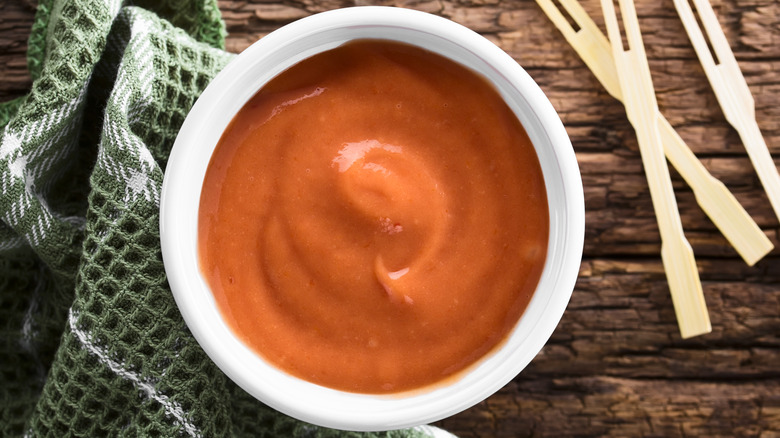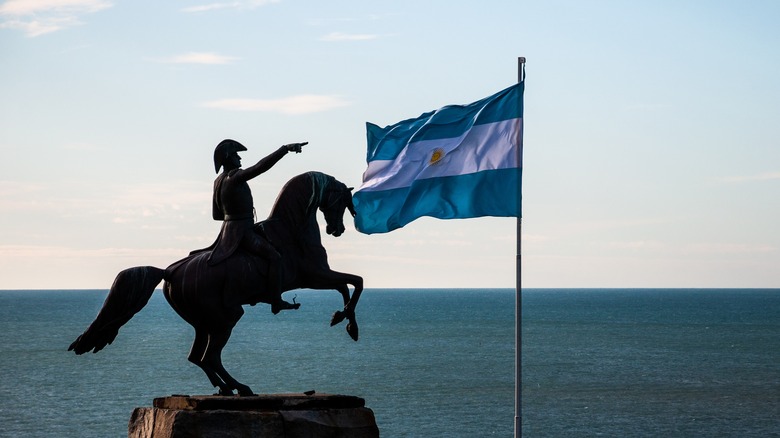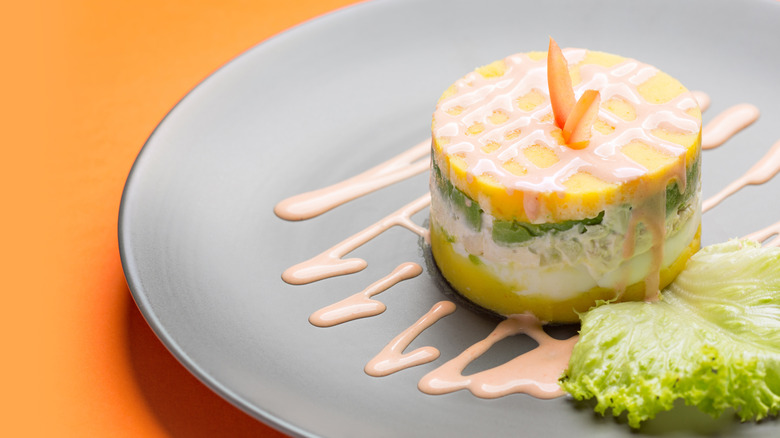Salsa Golf Is A Sauce, Not A Sport
Argentina has a proud sporting lineage and a storied history of dancing. When one learns that salsa golf is an Argentine tradition dating back almost a century, two possible translations come to mind — the first is some kind of endurance dance contest where couples try and dance the length of eighteen holes to a salsa beat, and the other a battle between chefs trying to come up with the best sauce with the fewest ingredients possible. The name and the national obsession make the quaint reality of the pink-hued dip that they call salsa golf seem disappointing — after all, salsa golf is little more than a simple mix of ketchup and mayonnaise.
However, to dismiss salsa golf as a cute name for thousand-island dressing is to miss out on the tale of how this simple sauce spread from one table at a golf club by the sea to plates across Central and South America. The inventor of salsa golf won a Nobel Prize in chemistry in 1970, yet his sauce is still his most notable achievement in his home country. He famously said, "If I had patented this sauce, today we would have a lot more money for research." It was invented to go with shrimp and is a wonderful accompaniment for fries or the most Argentine of all dishes, steak. However, the way that South Americans use salsa golf with vegetables indicates exciting possibilities for extravagant dishes made possible with regular, storecupboard essentials.
The history of salsa golf, Argentina's cocktail sauce
The legend of the salsa golf's invention is attributed to a young medical student named Lucas Federico Leloir, who was spending a mid-1920s summer relaxing by the beach at Mar del Plata, a resort town about four and a half hours south of Buenos Aires. The young Leloir and friends regularly lunched on local shrimp at the Mar del Plata Golf Club. Growing bored of the plain mayonnaise they were served day after day, Leloir asked the waiter to bring out every sauce and condiment from the kitchen so that he could experiment and find a better accompaniment for his seafood.
After a while, Leloir landed on a mix of equal parts mayonnaise and tomato ketchup spiked with a few drops of Tabasco and a splash of brandy. To honor the place where their compadre rescued their lunches from interminable boredom, Leloir's friends christened the mixture "salsa golf," and the name stuck. It became so popular that major international brands, including Hellmann's, began to market their own, premixed versions.
Salsa golf differs from a North American cocktail sauce in that it always includes mayonnaise to give it its creamy texture. In the U.S., cocktail sauce is usually a sweet sauce base such as ketchup or chili spiked with the acidity of lemon juice and the fire of horseradish. In Europe, South and Central America, or Australia, however, your shrimp cocktail is likely to come with a sauce more like salsa golf.
How to take inspiration from salsa golf
Salsa golf is stupendously good in shrimp cocktail, but another retro Argentine classic that prominently featured salsa golf was hearts of palm salad. This is an interesting tropical vegetable, and the association from '80s dinner parties has carried through to Argentine pizza tastes. The vegetables are called "palmitos" and are known as a popular Argentine topping, and salsa golf is still the preferred sauce to eat them with, even on a pizza!
If hearts of palm pizza isn't your thing, then how about a mashed potato cake? Peruvian causa is basically that. In a hearty casserole or as dainty rings, causa is constructed of layers of cold mashed potato that have a golden glow from being spiked with sweet, fruity, spicy aji amarillo paste. The stratified spuds are separated by a layer of sauced filling and decorated with edible designs. The most basic filling is tuna or chicken with mayonnaise, but causa is a dish that invites variation, and seafood versions using salsa golf are common. The word causa is thought to come from the pre-Hispanic Quechua language word kausay, meaning "life." This is because their word for life was also their word for potato, as spuds were a crucial part of the Peruvian diet. This dish can be made to look spectacular. Given how a seafood causa with salsa golf can link stories of ancient Peru with a Nobel Prize-winning chemist, perhaps it's time that the sauce made its dinner party comeback.


